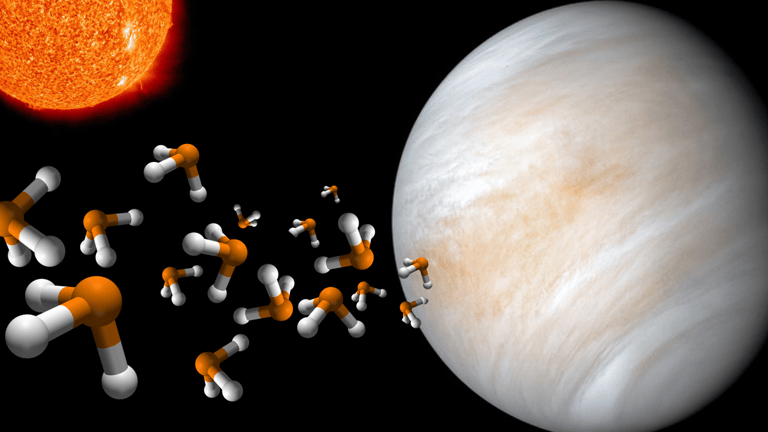New Evidence of Phosphine and Ammonia on Venus Fuels Speculation of Microbial Life
August 3, 2024
In 2020, scientists at Cardiff University, led by Jane Greaves, discovered phosphine in the clouds of Venus, suggesting the possibility of life on the planet.
This initial finding sparked theories about the existence of microbial life on Venus, although many in the scientific community were skeptical due to concerns over data processing and detection methods.
The initial detection faced skepticism, but recent data has provided more substantial evidence, including renewed detections of phosphine that reinforce the original claims.
Recent measurements utilized a new detector named Nāmakanui on the James Clerk Maxwell Telescope, resulting in 140 times more data than the original detection.
New evidence suggests the presence of phosphine and ammonia in Venus's atmosphere, raising the possibility of a biological source for these gases.
Researchers hypothesize that ammonia could be produced by microbial life forms, potentially helping them regulate their harsh environment.
Ammonia's presence could help microbial life survive in Venus's acidic clouds by neutralizing some of the acidity.
While these findings are not definitive proof of life, scientist Dave Clements emphasized they are a step toward understanding the chemical processes on Venus.
Another hypothesis is that phosphine could be produced by volcanic activity on Venus, indicating complex chemical processes in its atmosphere.
Further evidence is needed to confirm these theories, with NASA's upcoming DAVINCI mission in the 2030s aiming to gather more information about Venus's atmosphere.
The upcoming European Space Agency's JUICE mission in 2025 may provide further insights, although instrument deployment remains uncertain.
Clements proposed that rare photochemical processes or volcanic activity on Venus could be responsible for the production of phosphine and ammonia.
Summary based on 4 sources
Get a daily email with more Science stories
Sources

Space • Aug 2, 2024
Venus may be able to support life, new atmospheric evidence suggests
BGR • Aug 3, 2024
Scientists find more proof of life on Venus
Slashdot • Aug 3, 2024
Venus May Be Able To Support Life, New Atmospheric Evidence Suggests - Slashdot
WKRC • Aug 3, 2024
Scientists say they found proof of life on Venus, what do you think?